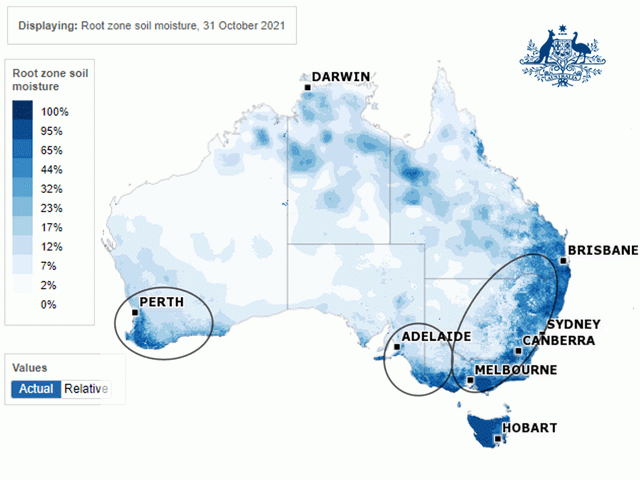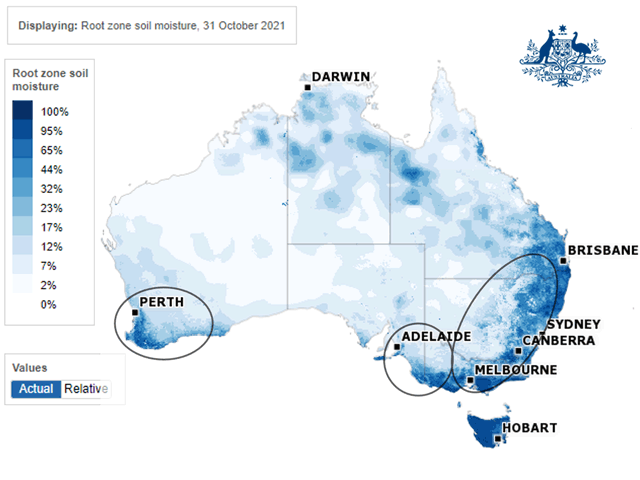Ag Weather Forum
La Nina has Variable Impact on S. Hemisphere Wheat Production
As the world wheat market continues to deal with low supplies brought on by droughts in Northern hemisphere countries during 2021, the Southern Hemisphere wheat harvest is beginning. At this point, it appears that the total wheat crop to be brought in from Australia and Argentina will be a big one -- not a total game-changer when it comes to world wheat demand, but certainly not adding to the supply shortage.
The 2021-22 wheat crop in Australia is estimated by USDA at 31.50 million metric tons; this is slightly less than the record 33.0 mmt total of 2020-21, but far above the very low harvest of only 14.48 mmt in 2019-20. In Argentina, production is estimated at 20 mmt by USDA, well above the 17.65 mmt crop in 2020-21 and higher than the total of 19.78 mmt in 2019-20. That brings the total for the two countries' output to 51.5 mmt in 2021-22 compared with 50.65 mmt in 2020-21 and far above a paltry 34.26 mmt combined total in 2019-20.
The development of a cool-water La Nina event in the Pacific Ocean appears to have had a variable impact on these two wheat-growing countries. Eastern Australia wheat areas have taken in consistent rainfall during the year, which offered favorable soil moisture, particularly in the state of New South Wales. Western Australia was also given a macro-scale rainfall boost from a positive barometric pressure feature in the Indian Ocean known as the Indian Ocean Dipole; this setting allowed beneficial rain to occur in Western Australia. (Note that the size of Australia is comparable to the contiguous United States.)
P[L1] D[0x0] M[300x250] OOP[F] ADUNIT[] T[]
Argentina has had more of a mixed rainfall pattern. Its northern crop areas were dry enough that reported wheat seeded area was less than expected. A USDA Foreign Ag Service post notes specifically that northern Cordoba, Santiago del Estero, and Chaco were dry during planting. Production areas farther south have in general seen better rains and more favorable soil moisture.
The primary wheat class produced in Australia is hard white wheat. Argentina's primary wheat production class is hard red wheat. Both countries also produce soft wheat varieties, and Australia produces durum as well.
Early November is bringing some heavy rain to Eastern Australia wheat areas. This rain is reportedly causing crop lodging and may bring on quality loss. The intensity and duration of this rainy spell will be closely tracked, especially with the market's desire for higher-quality milling wheat.
The DTN Analyst Team contributed to this post's content.
**
Get a full rundown on the 2022 outlook for U.S. and international crop areas during the DTN Ag Summit, Dec. 5-7, at the Fairmont Hotel in Chicago. Visit www.dtn.com/agsummit for more details about the summit and to register. Register before Nov. 26 for the early bird rate.
Bryce Anderson can be reached at Bryce.anderson@dtn.com
Follow him on Twitter @BAndersonDTN
(c) Copyright 2021 DTN, LLC. All rights reserved.






Comments
To comment, please Log In or Join our Community .